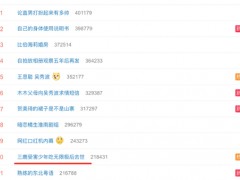Gout is a disorder that manifests as a spectrum of clinical and pathologic features built on a foundation of an excess body burden of uric acid, manifested in part by hyperuricemia, which is variably defined as a serum urate level greater than either 6.8 or 7.0 mg/dl. Tissue deposition of monosodium urate monohydrate crystals in supersaturated extracellular fluids of the joint, and certain other sites, mediates most of the clinical and pathologic features of gout. Typically, the disease initially presents as acute episodic arthritis. Gout also can manifest as chronic arthritis of 1 or more joints. Tophi, mainly found in articular, periarticular, bursal, bone, auricular, and cutaneous tissues, are a pathognomonic feature of gout, and are detectable by physical examination and/or by imaging approaches and pathology examination. Renal manifestations of gout include urolithiasis, typically occurring with an acidic urine pH. Chronic interstitial nephropathy, mediated by monosodium urate monohydrate crystal deposition in the renal medulla, can occur in severe disease, but is currently considered to be an uncommon clinical manifestation of gout.
Gout is one of the most common rheumatic diseases of adulthood, with a self-reported prevalence in the US recently estimated at 3.9% of adults (8.3 million people). The prevalence of gout has risen in many countries (e.g., New Zealand) and especially in the US over the last few decades, mediated by factors such as an increased prevalence of comorbidities that promote hyperuricemia, including hypertension, obesity, metabolic syndrome, type 2 diabetes mellitus, and chronic kidney disease (CKD). Other factors in the rising prevalence of gout include certain dietary trends and widespread prescriptions of thiazide and loop diuretics for cardiovascular diseases. Many gout patients, including the growing subset of elderly patients affected with gout, have complex comorbidities and medication profiles that complicate overall management. Long-term morbidity and impairment of health-related quality of life are now better appreciated in many gout patients, particularly those with multiple comorbidities and/or chronic gouty arthritis. Despite advanced understanding of the molecular bases of hyperuricemia and gouty inflammation and the extensive practice experience of many providers, substantial quality of care gaps exist in gout management. Moreover, significant shortfalls in patient education and adherence have been identified in gout.
痛风和风湿有什么区别 2012年美国风湿学院(ACR)发布痛风办理攻略(榜首部分)
精彩推荐
- 辅助驾驶谁更“老司机”?问界新M5才是真正懂你的出行伙伴

近期,2025年相关媒体发布的汽车辅助驾驶金字塔分级排行直接将华为乾崑智驾ADS划入极致尖顶区间,独享80-100分评分。而特斯拉与众多品牌则处于综合优选与安全基线区间。01...详细
- 万台下线里程碑背后:尊界S800如何重写豪华汽车市场规则

2025年12月16日,尊界S800第10000台量产车驶下生产线。这一刻,其意义早已超越了一款车型的成功,它意味着,在曾被西方品牌牢牢把持的超豪华权力堡垒中,中国品牌不仅成功...详细
- 尊界S800万台量产下线,开启中国品牌在百万级市场的“加速度”

2025年12月16日,尊界S800迎来第10,000台量产车正式下线。这一数字,在中国品牌百万级超豪华轿车的发展历程中,具有标志性意义。它不仅意味着中国高端制造成功切入曾被国际...详细
- 无惧寒冬的全能搭档:问界新M5 Ultra以卓越性能化解出行困扰

岁暮天寒,晨雾锁城,路面如镜这些冬季日常的出行挑战,不仅考验着驾驶者的技术与耐心,更在检验着一辆车的真实底色。当许多人仍在为冬季通勤的种种不便而烦恼时,众多问界...详细
本周热门
- 同仁堂健康双十一活动开启 “象食养医”倡导从健康的时候就关注健康

如果你想了解自己身体的秘密,让健康成为日常的生活方式,保持年轻的状态,实现抗衰老,逆生长的美好愿望,那么今年双十一的这场活动你一定不要错过。11月1日,同仁堂健康...详细





